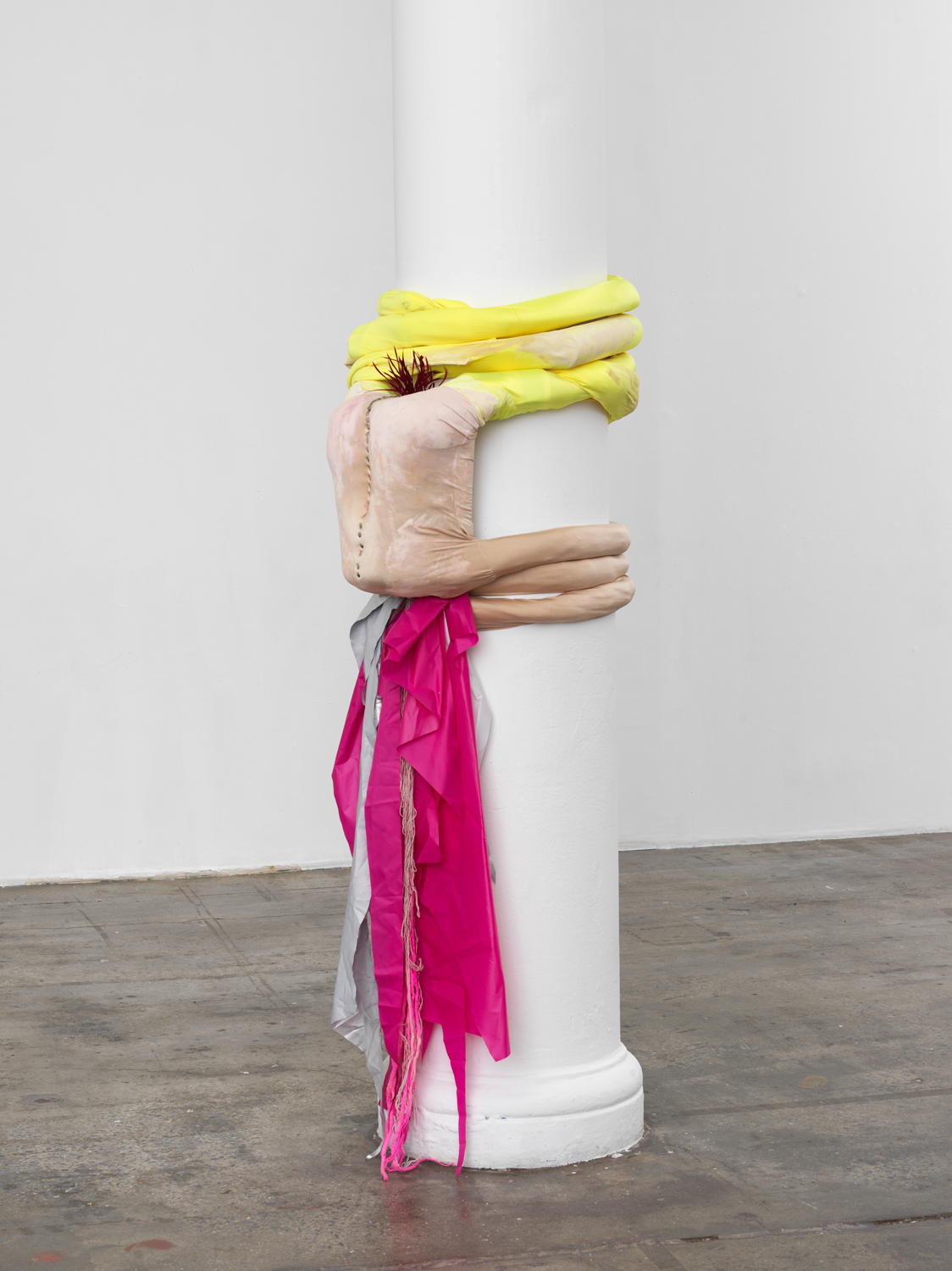Eat a Pink Owl
The generally accepted rule is pink for the boy and blue for the girl. The reason is that pink, being a more decided and stronger color, is more suitable for the boy, while blue, which is more delicate and dainty, is pertier [sic] for the girl. Ladies' Home Journal, 1918.
Fridman Gallery presents Eat a Pink Owl, Tamar Ettun’s second solo exhibition with the gallery.
This is the third installment in Ettun’s tetralogy, Mauve Bird with Yellow Teeth Red Feathers Green Feet and a Rose Belly, incorporating sculptural installations, performance, video, and works on paper. Ettun's ongoing body of work focuses on primal emotions, each symbolized by a primary color: the 2015 Blue was for Empathy, last year’s Yellow – Desire. In this exhibition, Pink is synonymous with Aggression which is another way to relate (identification can occur literally, through eating the objects of our fancy).
The dualities in Ettun’s practice – performance/sculpture, healing/trauma, temporariness/ permanence,
functionality/abstractness – apply to relationships among humans, and humans’ relationships to objects. Ettun applies dance vocabulary and compositional techniques to object making, and she challenges the stillness of sculpture by making it perform: grab, stretch, hang, balance, reach out. The works in Eat a Pink Owl are dichotomies wound up with potential energy. An upside-down woman at full stretch – her feet suspended from the ceiling, hair dangling to the floor, an inverted Caryatid echoing the gallery’s columns – carries the height of the space and a procreational bird's nest inside her. A seated warrior woman, tightly wrapped in self-defense and propriety, flashes a peacock’s tail. A giant pink horse, soft and flexible, his rider a fisherwoman: neither is in charge, both are ready to charge.
Ettun’s flamboyant assemblages call for a physical response in the viewer: their sharp-edged limbs and horns point to internalized pain and destructive tendencies; yet their soft bodies and relaxed poses suggest rebirth and pleasure. Pink used to be a boys’ color, becoming a symbol of submissiveness ascribed to women only after World War II. Eat a Pink Owl is about gender fluidity, femmes repossessing pink as a symbol of assertiveness, through bodily forms and primal emotions.
The exhibition will be accompanied by a catalog with an essay by Wendy Vogel and an interview with the artist by Barry Schwabsky. Click here
Fridman Gallery presents Eat a Pink Owl, Tamar Ettun’s second solo exhibition with the gallery.
This is the third installment in Ettun’s tetralogy, Mauve Bird with Yellow Teeth Red Feathers Green Feet and a Rose Belly, incorporating sculptural installations, performance, video, and works on paper. Ettun's ongoing body of work focuses on primal emotions, each symbolized by a primary color: the 2015 Blue was for Empathy, last year’s Yellow – Desire. In this exhibition, Pink is synonymous with Aggression which is another way to relate (identification can occur literally, through eating the objects of our fancy).
The dualities in Ettun’s practice – performance/sculpture, healing/trauma, temporariness/ permanence,
functionality/abstractness – apply to relationships among humans, and humans’ relationships to objects. Ettun applies dance vocabulary and compositional techniques to object making, and she challenges the stillness of sculpture by making it perform: grab, stretch, hang, balance, reach out. The works in Eat a Pink Owl are dichotomies wound up with potential energy. An upside-down woman at full stretch – her feet suspended from the ceiling, hair dangling to the floor, an inverted Caryatid echoing the gallery’s columns – carries the height of the space and a procreational bird's nest inside her. A seated warrior woman, tightly wrapped in self-defense and propriety, flashes a peacock’s tail. A giant pink horse, soft and flexible, his rider a fisherwoman: neither is in charge, both are ready to charge.
Ettun’s flamboyant assemblages call for a physical response in the viewer: their sharp-edged limbs and horns point to internalized pain and destructive tendencies; yet their soft bodies and relaxed poses suggest rebirth and pleasure. Pink used to be a boys’ color, becoming a symbol of submissiveness ascribed to women only after World War II. Eat a Pink Owl is about gender fluidity, femmes repossessing pink as a symbol of assertiveness, through bodily forms and primal emotions.
The exhibition will be accompanied by a catalog with an essay by Wendy Vogel and an interview with the artist by Barry Schwabsky. Click here













